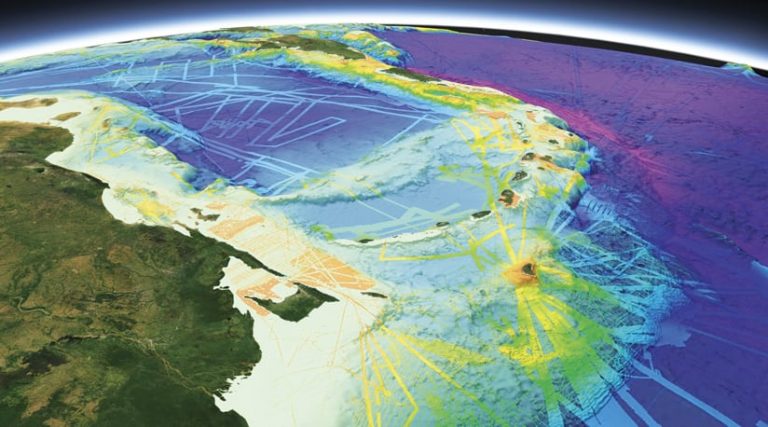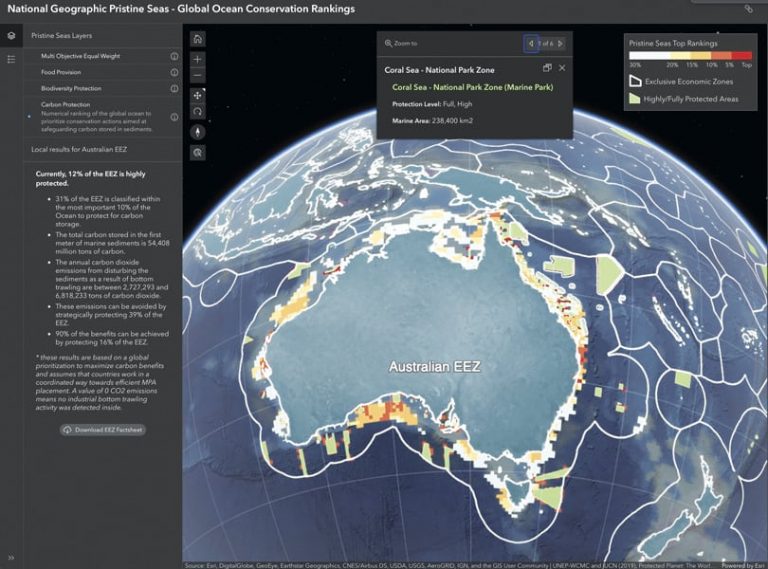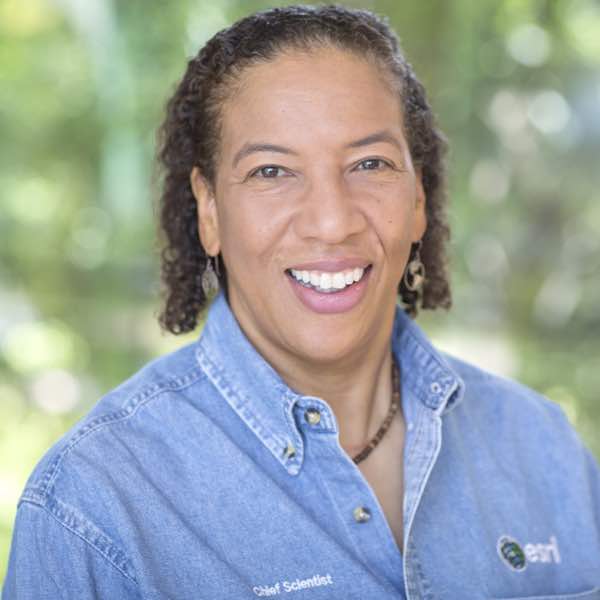Thirty years ago, I had the privilege of seeing the deep ocean up close. For my PhD research, I dropped 1.5 miles in the Alvin submersible above the East Pacific Rise, southwest of Acapulco, Mexico. Beyond illuminating the oceanographic process I was studying—the connection between plate tectonics, volcanic eruptions, and deep-sea vents—that one shaft of ocean opened my eyes to a larger truth: humans are largely blind to this enormous and lively part of the world that covers more than two-thirds of Earth.
It is worth repeating that scientists know more about Mars, Venus, and the dark side of the moon than they know of Earth’s ocean depths. To date, less than 20 percent of the ocean floor has been mapped—13 percent in just the past four years. But scientists would like to map it all by 2030. It’s an essential undertaking, but it’s going to take dedicated effort, public support, and government funding. Such a project can be accomplished only through dedicated global cooperation.

The payoff stands to be tremendous—for everything from ship navigation to climate modeling. A clear view of the ocean floor’s topography would allow for optimal siting of undersea cables and offshore wind turbines. It would show where deep-ocean fishing can be done safely and where it cannot. And with a clear three-dimensional understanding of ocean volume, meteorologists could better understand how typhoons and tsunamis travel and intensify as they cross the ocean, bringing storm surges to the shoreline. In addition, climate scientists could better measure the circulation of heat in the ocean and thus build better models of climate change.
Climate change is the most basic and urgent reason to map the ocean as quickly as possible. Healthy oceans play an outsize role in minimizing climate change because they capture carbon emissions. But this capacity has limits. Excess carbon acidifies ocean waters, making life difficult for coral reefs and shellfish (oysters, mussels, snails, and clams). It also lowers the oxygen content of the water, impairing the ability of all sea life to breathe. Human practices that disturb the ocean floor—chiefly trawl fishing—make matters worse by releasing carbon from the ocean floor. Deep-sea mining, if it is allowed to go forward unmanaged, would have a similar effect and further disturb undersea ecosystems.
To measure the progress of climate change and study the ocean processes and human activities that affect that progress, it is essential to assemble a detailed picture of the undersea world. Too many people are still thinking of the ocean as “out of sight, out of mind” and not relevant if they don’t live near it. This is a luxury we can no longer afford. The ocean floor is still too invisible—even to many people who work on climate change issues!
For example, the original 1994 United Nations (UN) Framework Convention on Climate Change—on which all subsequent UN climate change frameworks are based—only recognized three marine and coastal ecosystems: mangroves, sea grasses, and salt marshes. To date, the shallow and deep parts of the ocean floor are still excluded from this framework, even though scientists now know what a huge storehouse of carbon the ocean floor is, despite having mapped only 19.7 percent of it in detail. In the fight against climate change, the UN and global governing bodies must include the ocean floor in global carbon accounting—the process of quantifying the greenhouse gases emitted in the atmosphere—and ocean scientists must continue to learn more about this storehouse for the sake of scientific and policy guidance. To gain this understanding, we must map, and we need all hands on deck.
Scientists have the technology to get the job done. Today’s sonars are sensitive enough to map features of ocean water above the seafloor, including wave action, schools of fish, and changes in coral reefs that can indicate marine oxygen levels. GIS is now routinely used to analyze data from an array of sources—including sonar, satellites, submersible craft, and underwater cameras—to put together a three-dimensional picture of the underwater world and to study how best to manage and protect it.

The Seabed 2030 initiative, an effort fully sanctioned by the UN and supported by the Nippon Foundation to map the ocean floor, has collected bathymetric (depth) data from governments and other data owners. Sensors carried aboard transoceanic cruise ships and cargo ships have gathered more data. And robots have been engaged to survey the ocean floor, similar to the way robots have been used to map the surface of Mars and other planets.
To finish the job in due time, though, the initiative will require an extended commitment and further funding. Private sector partners are chipping in, including Vulcan, a philanthropic company founded by the late Paul Allen of Microsoft, and the Schmidt Ocean Institute, launched by Wendy Schmidt and Eric Schmidt of Google. But the amount of work ahead requires the kind of funding that only governments can provide.
Larry Mayer, director of the Center for Coastal and Ocean Mapping at the University of New Hampshire, has calculated that $3 billion to $5 billion will be needed to finish this job. It’s a big price tag, but compare it with outlays for space travel and exploration—the National Aeronautics and Space Administration (NASA) is spending nearly $3 billion on the Perseverance Mars rover—and the dollar for dollar value is obvious. All the major seagoing science powers of the world—including the United States, the United Kingdom, France, Germany, and China—must contribute.
Climate change—so vividly illustrated by a summer of fire and floods on land and documented by the Intergovernmental Panel on Climate Change’s (IPCC) recent historic report—has greatly increased the urgency to see the entire ocean in detail. The job can be done by the end of this decade if countries step up to the challenge.
This, in great part, means embracing the vision of a planetary GIS that’s composed of a coordinated constellation of hubs and geoportals distributed both geographically (across regions and nations) and thematically (e.g., connecting teams that are tackling global mapping projects, such as Seabed 2030, and local organizations that have data and reporting about specific, in-country UN Sustainable Development Goal indicators). For the ocean and coastal user communities, these hubs and geoportals can catalog information items in a well-organized way and connect them to related maps, apps, analytical models, and other relevant data. And all this is built around a series of best practices adopted from a wide range of communities and events, including those that incorporate indigenous knowledge systems. Learn lessons and other resources present the workflows, approaches, and stories needed to bring these best practices to light.
The technology is there. The time to use it to map Earth’s oceans is now.


